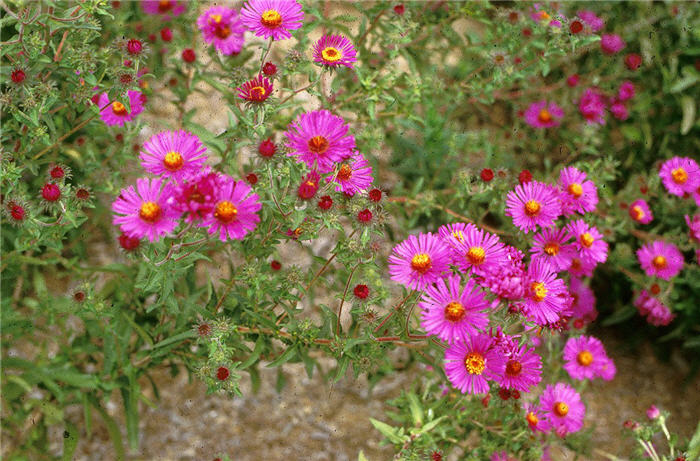| Botanical Name: Aster novae-angliae 'September Ruby' | |
| Common Name: September Ruby Aster |

-
Anatomy
-
Culture
-
Design
Plant Type
Perennial
Height Range
3-6'
Flower Color
Pink
Flower Season
Summer, Fall
Leaf Color
Dark Green
Bark Color
n/a
Fruit Color
n/a
Fruit Season
n/a
Sun
Full
Water
Low, Medium
Growth Rate
Moderate
Soil Type
Clay, Loam
Soil Condition
Average, Rich, Poor, Well-drained, Dry
Soil pH
Neutral
Adverse Factors
n/a
Design Styles
English Cottage, Meadow, Mediterranean, Ranch
Accenting Features
Showy Flowers
Seasonal Interest
Summer, Fall
Location Uses
Background, Perennial Border, Foundation, Patio, Walls / Fences
Special Uses
Cut Flowers
Attracts Wildlife
Butterflies
Information by: Stephanie Duer
Photographer:
Photographer:
-
Description
-
Notes
'September Ruby' is a aster cultivar that blooms from late summer to late fall, with vivid ruby rose flowers with large yellow-orange centers on tall arching stems with rich green, lance-shaped foliage. Wonderful at the back of a perennial border or in front of taller ornamental grasses, for a fabulous late season show. I've planted tricolor ajuga at its feet, and as it gets cold, the ajuga turns more pink and matches the pink of the aster. It was actually just dumb luck, and it was gorgeous.
Grow in average, medium to dry, well-drained soils in full sun to part shade. Pinching back stems in late spring will lower overall plant height, but will also delay bloom onset and increase branches, increasing the number of blooms. A light winter mulch will help protect crowns. Cut stems to the ground in early spring before new growth appears. Wet soils in winter can be fatal.